As we approach the end of the year, one’s mind naturally turns towards appraisal. What’s gone well in the past year? What could we do better next year? Usually, the focus of this for me is in my painting of miniatures. I don’t think I’ll ever feel like I’m getting through enough of them.
With the return to in-person gaming this year, I’ve managed to get back into board games. I’ve spoken before about feeling a bit flat about these games. That’s still true to some extent, and I’ve come off the treadmill of really paying a lot of attention to what’s coming out from one month to the next. Well, I read enough to get by, but it’s no longer the focus and expense that it was before. I’m also enjoying trying to do more reviews these days, and I like the idea of revisiting elements of my collection to do reviews of games that, whilst not new, could be a great new experience for the typical board game player.
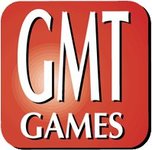
As I cast my eyes over my shelves, there are a few that make me feel particularly guilty. These are my GMT Games shelves. I love GMT. They’ve had games in my top 10 every year that I’ve done a list (2016, 2017, 2018, 2019), I’ve praised their preordering system, and I’ve set myself goals for both 2021 and 2022 to play more of their games, and replay the ones I’ve already played. Yes, my relationship with GMT is not quite what I want it to be. I’d say that it’s not for lack of trying… but it may be partially for a lack of trying.
Yes, it’s harder to persuade a group to try a heavy, dry-looking board game that will take a long time to play. Yes, we need someone familiar with the rules before we start. Yes, there are a million other more colourful and accessible games floating around our local club. The thing is, none of these cannot be overcome with knowledge, preparation, and enthusiasm. The enemy of these qualities is exhaustion, and I feel that over the past few years, that’s all I’ve exhibited. I’m not prepared. I’ve not effusively sold these games, as I have others. Maybe that needs to change before I can expect to really get into it with these titles. Maybe I need to be the change I want to see, as I am so fond of telling others.
So, then, let’s take a look at the shelves. I’ve not reorganised them, so these are a mix of played and unplayed.
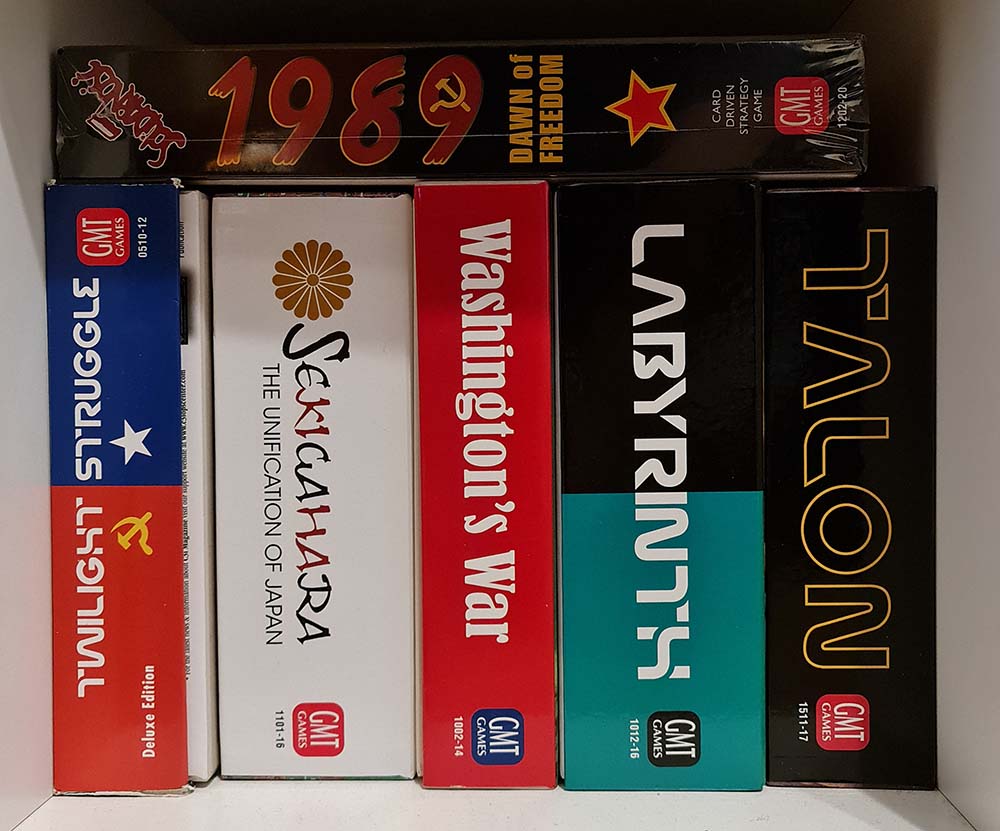
Twilight Struggle has long been one of my favourite board games. It strikes a great balance between gameplay and theme. It’s also one of the more attractively-produced GMT titles. It’s also a game that I find quite easy to get to the table. The game’s reputation is well-established and I have definitely been an enthusiastic advocate, locally.
1989: Dawn of Freedom was a gift that I have shamefully not even removed from the cellophane. I’d been waiting for the reprint of this for some time, knowing that it was heavily based on Twilight Struggle and therefore one that I’d probably really enjoy. This is one that I need to prioritise getting to the table.
Sekigahara: The Unification of Japan is a game that I was really excited about before it came out. I loved the look of the game and the partial fog of war mechanism that shows the presence of an army but not the contents. The theme was also really interesting to me. Again, this is unplayed.
Washington’s War is another card-driven game in the same vein as Twilight Struggle and 1989. It was a gift from my brother-in-law. I’ve managed to get this to the table a few times and I very much enjoyed it. The asymmetric forces of the British and Colonial armies make the game interesting, and you can really see how the original version of this game, We the People, evolved into Twilight Struggle.
Labyrinth: The War on Terror, 2001 – ? is a game that was not quite what I expected. I’ve gotten it to the table once. I was still very new to GMT Games at the time and I expected it to be much closer in gameplay to Twilight Struggle. It being that wee bit heavier than Twilight Struggle meant that it wasn’t quite the best match for my opponent. Twilight Struggle was the heaviest she had gone gamewise, and Labyrint just didn’t click with her. Having been born as the cold War was winding down, Twilight Struggle was also that bit more distant. It was history. Labyrinth is based on the War on Terror, the defining feature of our adolescent and early adult political landscape. It felt more real and, as such, a vital heavier, thematically. I think I’d appreciate the game more now, particularly if I can find an opponent keen to learn it with me.
Talon is the last item on this shelf. It’s another one that I have not played at all, having picked it up via the P500 preorder system. A game of ship combat, it’ has a ‘s got that slightly intimidating look to it that some GMT titles can have, but BoardGameGeek says it’s lighter than Terraforming Mars, so maybe I’m being overly cautious. I love the idea of fleet-to-fleet combat, so this is likely one that will be high on my list to get to the table.
And that’s the first shelf done. I have two more shelves to talk about. We’ll take a look at them on Wednesday in the second and final part of this article!
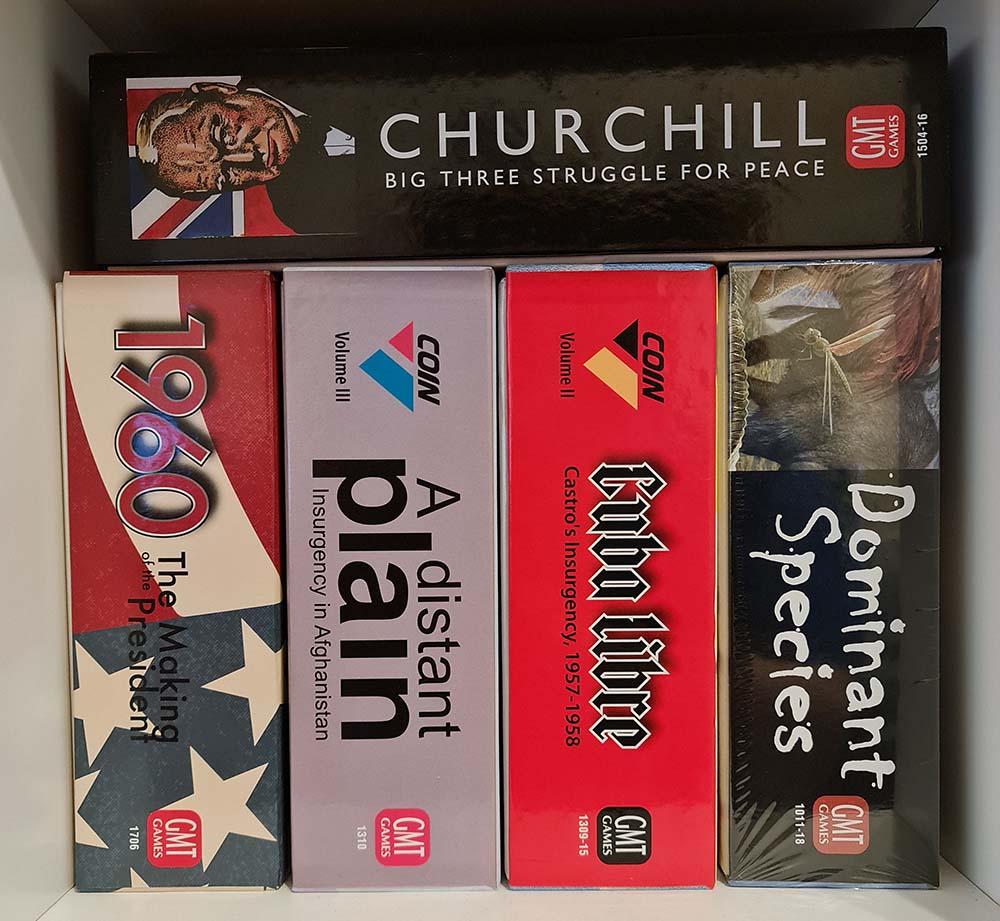
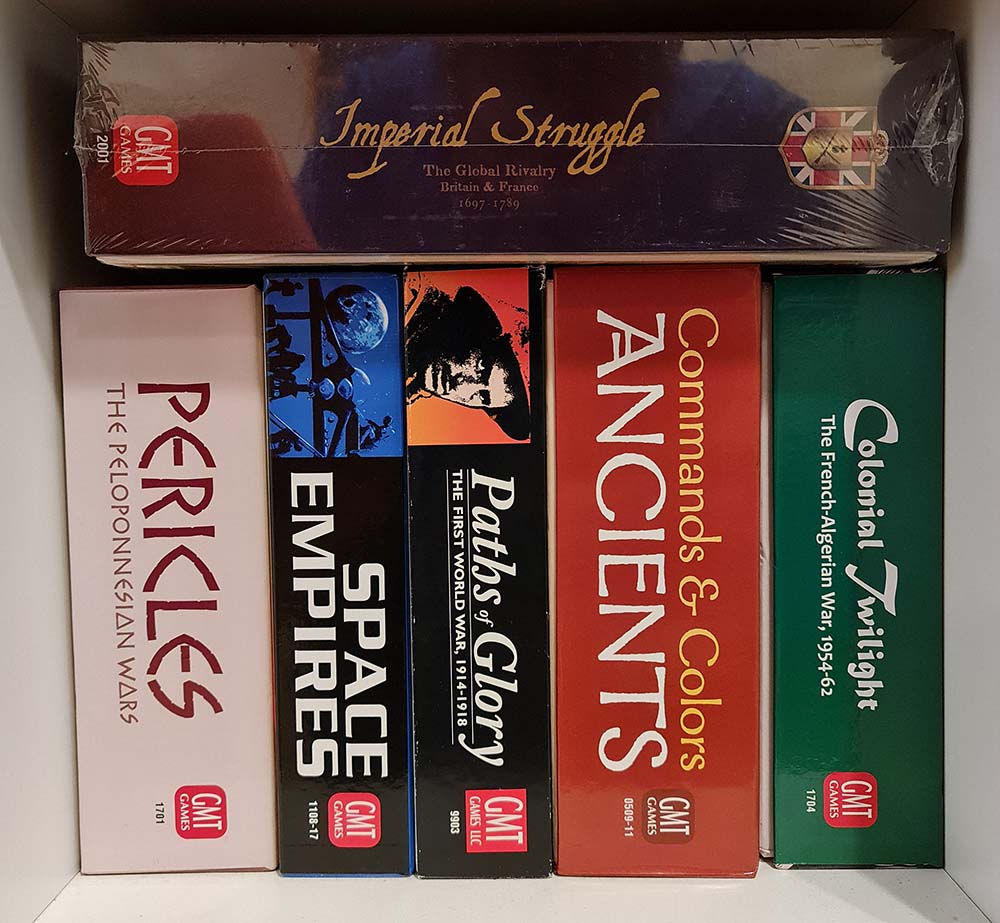

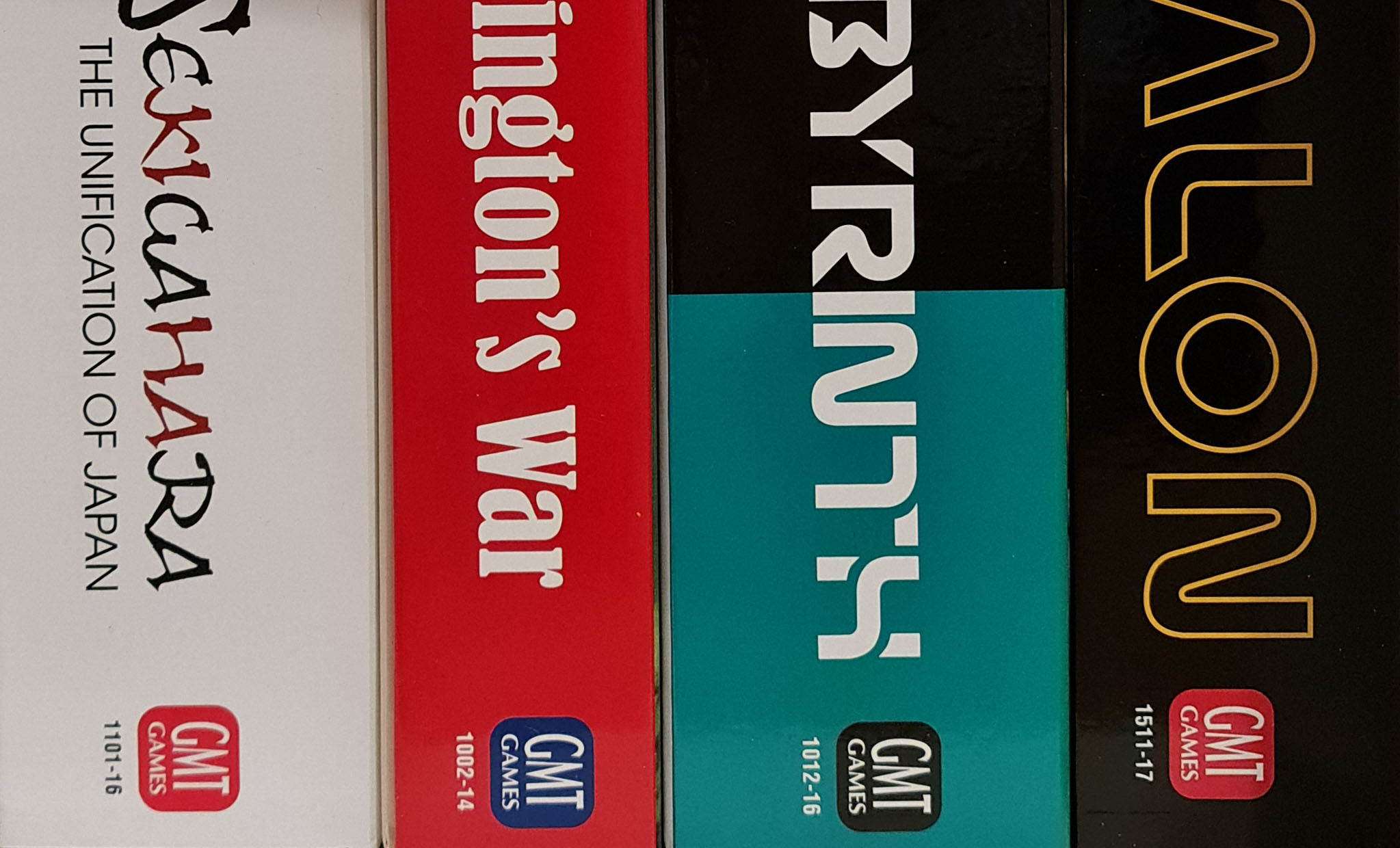
I’m with you! I have a bunch of unplayed GMT games on my shelf and I need to rectify that. Of this first batch, I’ve only played Twilight Struggle (though I’ve played Labyrinth on the app) and I have 1989. Haven’t played that one yet, but it looks cool.
Seeing the other two shelves, I see some more goodness coming!
LikeLike